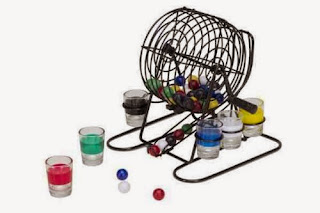We’ve made it to the “free square” on the 2017 Leaning Stack of Books Diversity Challenge bingo card. I’ve decided to choose the category,
“Nonfiction About Race or Class in America.” And the book that fills that
category is Janesville: An American Story by Amy Goldstein.
I listened to Janesville on audio, and come to think of it,
audio books offered a great way for me to branch out from my go-to diet of
fiction about sad white ladies. In the final half of 2017, I listened to three
audio books that filled squares on my bingo card. Yay, broadened horizons!
Janesville is a true case of
narrative ethnography -- only rarely do I feel like the author steps in the
middle of it. It follows the trajectory of residents of Janesville, Wisconsin
after the General Motors plant closes and offers a complicated story of the
declining middle class. I was most struck by the hope that gets pinned on
education (workforce retraining) as a way to bolster the middle class in the face
of economic change -- and, in this case, its lack of impact.
This book will clearly appeal to people wondering what happened during the 2016 election, and frankly, I think it is better than Hillbilly Elegy by J.D. Vance – which was the book that has received the most praise for trying to explain the mindset that propelled some economically struggling white people to become Trump’s base. Goldstein brings a journalist’s eye and craft to her work, while Vance is talking about his family and his neighbors and his own history. Janesville is part of this same conversation because of Wisconsin’s Electoral College vote outcome and also because it is Paul Ryan’s hometown. It is notable, however, that this is NOT a book about Trump, and Goldstein doesn’t even mention him until the epilogue. Plus, Janesville voted Democratic during the election.
Several reviewers
have noted that Janesville needs a part 2. Understanding the state of our
politics requires grappling with race, and Goldstein does not do that with much
depth. It’s true that the Janesville community is over 95% white, but the
existence of the all-white communities is part of the story of racial
segregation and exclusion that is central to American economic history.
Goldstein does give a nod to the fact that Beloit, Wisconsin – just down the
freeway from Janesville – is more racially diverse (15% African American and
17% Latino). The politics that led to a region that has those racialized
elements is important.
Of course, there
might be a bigger question at stake for readers who pick up a book about
Wisconsin. What is the appeal of cheese curds? Why?!?!?!
 |
| Valentine's Day Themed Curds????? |
Here’s a link to a Marketplace interview with Goldstein, with an edited print transcript included.
And here’s a review that I liked from The New Yorker. Janesville won the Financial Times and
McKinsey Business Book of the Year for 2017.


























